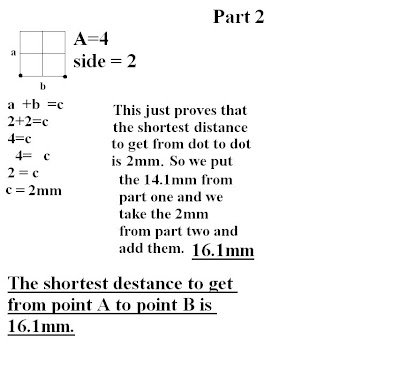
Made By: Deb Russell
The Pythagorean theorem
The formula of the Pythagorean Theorem is A squared +B squared =C squared (or on the top left of the picture)
The Right Triangle:
The right angle had a 90 degree angle. Of course something has to make that 90 degree angle, the leg A and B make up that angle.
The line across the 90 degree angle is the longest side which is called the hypotenuse.
There is also two other things that are in the right triangle that equals 90 degrees, these two are called theta and beta.


The right angle had a 90 degree angle. Of course something has to make that 90 degree angle, the leg A and B make up that angle.
The line across the 90 degree angle is the longest side which is called the hypotenuse.
There is also two other things that are in the right triangle that equals 90 degrees, these two are called theta and beta.

The Square:
The square always has sides that are all the same, all sides equal 90 degrees. When you split a square by cutting once across the 90 degree angle it makes two right triangles.
Two angles that equals to 90 degrees are called Complementary.
Angles that makes a straight line equals 180 degrees. And two angles are called Supplementary.
The square always has sides that are all the same, all sides equal 90 degrees. When you split a square by cutting once across the 90 degree angle it makes two right triangles.
Two angles that equals to 90 degrees are called Complementary.
Angles that makes a straight line equals 180 degrees. And two angles are called Supplementary.
This was all invented by a Greek man named Pythagoras. Pythagoras is a mathematician,and a teacher/philosopher. He is also one of the most important mathematicians in the world.

In math class we made a video about how to solve to the "C" i hope you like it.
But wait we also made a second video on how to solve the "B" this time. I hope you like it.
































































